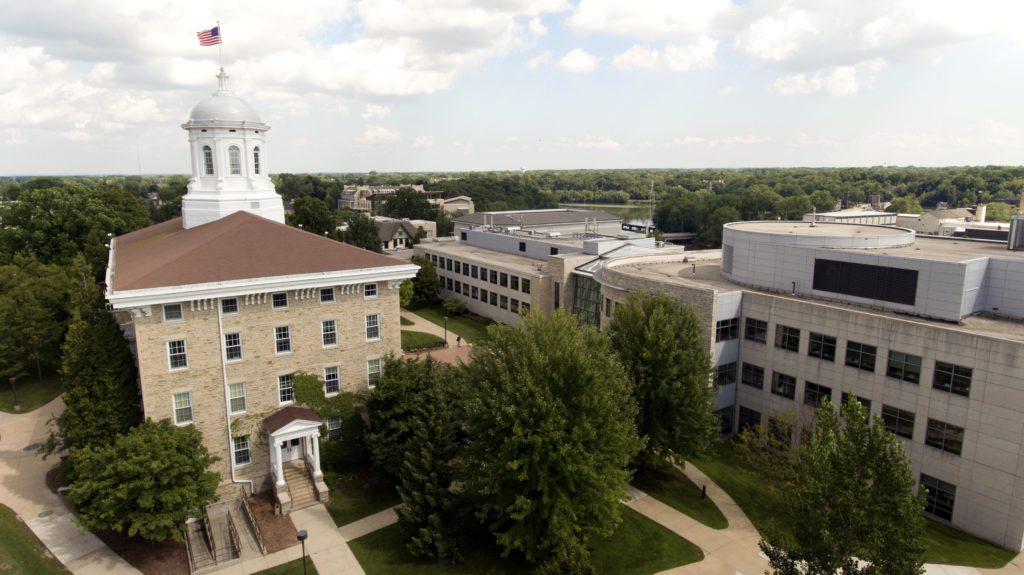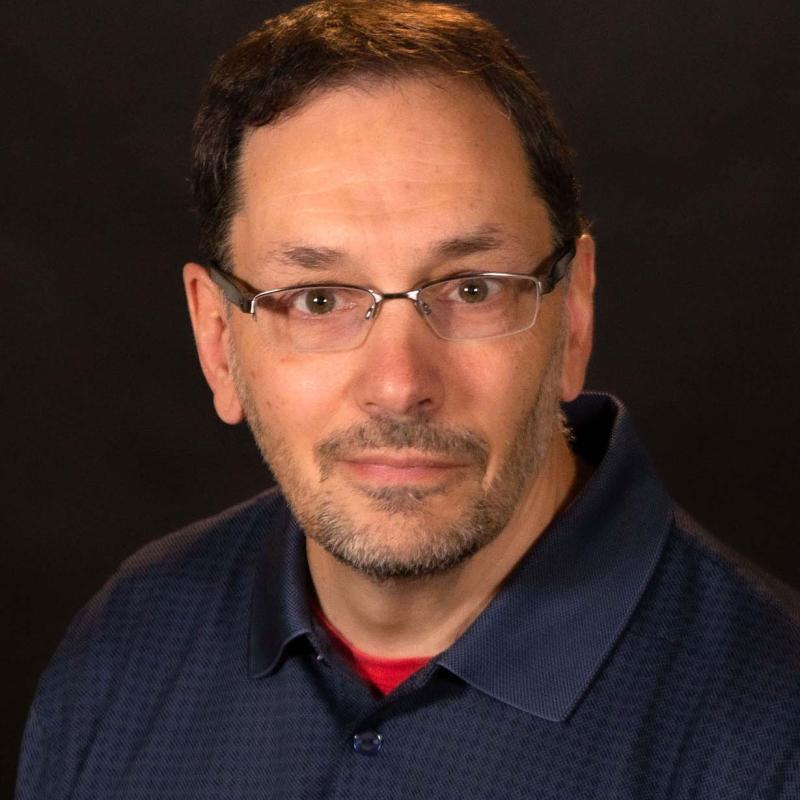Three members of the Lawrence University faculty — all teaching in the sciences — have been granted 2019 tenure appointments.
The college’s Board of Trustees, based on recommendations by the faculty Committee on Tenure, Promotion, Reappointment and Equal Employment Opportunity, and President Mark Burstein, granted tenure to Allison Fleshman (chemistry), Alyssa Hakes (biology) and Brian Piasecki (biology). All three have been promoted to associate professor, effective Sept. 1.
“Lawrence has some of the best faculty in the world; I can say that with certainty because I get the immense pleasure of seeing direct evidence testifying to that fact every year in reviewing the accomplishments of faculty who stand for tenure,” said Catherine Gunther Kodat, provost and dean of the faculty. “This year’s tenure class had the unique aspect of really showing off faculty talent in the sciences. Alyssa, Brian, and Allison are not only doing stellar work in their labs, they are true teacher-scholars, who meaningfully involve their students deeply in their own research.
“I am delighted that they have chosen Lawrence as their intellectual home, and look forward to applauding their accomplishments in the future.”
To help you get to know the three new tenure appointments a little better, we gave them each four questions to answer:
Allison Fleshman
Promoted to associate professor of chemistry. Joined Lawrence in 2013. Fleshman has a bachelor of science degree in physics and a Ph.D. in chemistry from the University of Oklahoma.
What or who inspired you to pursue chemistry?
“I’ve always been in awe of nature, and trying to unlock her secrets is the job of a scientist. My particular science, physical chemistry, is about understanding how nature’s building blocks — atoms and molecules — interact and move about.
“As an undergraduate, I couldn’t decide between physics and chemistry, so what a delight when I worked as an undergraduate summer researcher with physical chemist Roger Frech (who later became my doctoral advisor) and learned I could do both. It’s incredible to look at a chemical problem as a physicist and see the mathematical interworkings unfold.

Allison Fleshman
“I also love to teach and share my passion for this subject, so working at Lawrence allows me to share physical chemistry with students in class sizes that are small enough that we can really dive deep into the material. I often joke that I get paid to read a textbook and share my findings with a captive audience — I absolutely love it.”
What about the work you’re doing at Lawrence has you the most excited?
“My research looks into what makes liquids flow, which seems like something we should understand. But as we learn more about materials on the molecular level we discover that our understanding is incomplete. What excites me most about this work is that it is rewriting what is in the textbooks.
“My students often take the textbook as absolute truth, but this work helps them see that even our most agreed upon understanding still has room for improvement. In addition, the liquids I study are called ionic liquids — salts in the liquid form — and they are showing great promise as materials for carbon sequestration, and could help revolutionize industrial processes that emit greenhouse gases. It is essential that we all act to combat global climate change, and this research lets me fight it both in the lab and in the classroom.”
How do you think your students would describe your teaching style?
“My students probably wouldn’t argue that I love my subject more than humanly possible and think physical chemistry is one of the most beautiful disciplines to study. That enthusiasm also seeps into my teaching. ‘Go Team’ is a phrase I say quite often, and I think my students would liken me to their cheerleader/coach, encouraging them to push themselves beyond their comfort zone and embrace the challenging path.”
What’s something you do outside of work that gives you joy?
“I practice yoga on a daily basis and find peace and serenity in that daily ritual. I am also a co-owner of a local brewery located in downtown Appleton with my husband and his family called McFleshman’s Brewing Co. When I’m not in the classroom, I’m in the taproom supporting the family’s efforts to make traditional English and German beers. My chemistry skills help us bridge the art of brewing with fermentation science and those efforts yield some delicious pints. Cheers!”
Alyssa Hakes
Promoted to associate professor of biology. Joined Lawrence in 2012. Hakes holds a bachelor’s degree from the University of Illinois Urbana-Champaign and a Ph.D. from Louisiana State University.
What or who inspired you to pursue biology?
“I wanted to be an ecologist since I was a kid. I fell in love with nature reading Ranger Rick magazines and through hiking and camping with my family and Girl Scouts. I first became interested in insects during the 17-year periodical cicada emergence of 1990 in the Chicago area. I collected a bunch and brought them to ‘show and tell.’
“My interest in plants started when I made a wildflower trail for my Girl Scout Gold Award project, and then continued in college when I went on a research trip to Panama to study rainforest plants. Because of that experience, I know how important faculty-mentored undergraduate research opportunities are to the development of a young scientist. By specializing in ecological interactions between plants and insects, I was able to combine all of my interests in botany, entomology, and ecology into one research program.”

Alyssa Hakes
What about the work you’re doing at Lawrence has you the most excited?
“My lab has been doing an exciting project in Door County involving a rare plant and invasive insect. The federally-threatened Pitcher’s thistle is a native plant that is found only in sand dune habitats of the Great Lakes. Recently, an ‘evil weevil’ has invaded the sand dunes and is eating the seeds of the plant, which is bad news.
“My students and I take summer research trips to the Lake Michigan field site and have discovered areas of the dune where weevil damage is more intense and less intense. Our data show that dune elevation and neighboring plant community influence weevil dispersal and damage. We are now using this knowledge to develop methods for controlling the insect and conserving the plant. The proximity of our field site to Bjorklunden has been key to our success. And it’s fun to have a beach as a summer office.”
How do you think your students would describe your teaching style?
“I hope that my passion for the content comes through in my lectures. I like finding creative ways to demonstrate biological concepts in class, whether it’s making insect mouthpart puppets, throwing cut-out paper ‘seeds’ off the atrium balcony to study dispersal, anaesthetizing a touch-sensitive plant in class, or baking horrible-tasting cookies for students to demonstrate ‘Batesian Mimicry.’
“I like to be a little goofy and rarely pass on an opportunity to make a lame pun, adapt a meme to a class topic for a laugh, or tell stories that connect students with the material and make class more enjoyable. Through course evaluations, students have called me helpful, caring, and approachable. I don’t think I’ve been described as ‘hilarious’ on a course evaluation yet, but that’s secretly the dream.
What’s something you do outside of work that gives you joy?
“I enjoy spending time with my spouse and two kids. It’s fun seeing our kids develop their personalities and watching them try new things for the first time. We try to spend time with both sets of their grandparents as often as we can, which is a real privilege.
“I am active in my Appleton church, and I love being invited to talk about the science of evolution with my congregation. Evolution was something I once misunderstood as a teenager, but has become an exciting and integral part of my scientific career. It brings me joy to share my passion for evolutionary biology with others in my faith community. I also teach Sunday School.
“To relax, I like watching baseball and Mystery Science Theater 3000 episodes.”
Brian Piasecki
Promoted to associate professor of biology. Joined Lawrence in 2011. Piasecki holds a bachelor’s degree from the University of North Texas, a master’s degree from the University of Texas at Austin and a Ph.D. from the University of Minnesota.
What or who inspired you to pursue biology?
“Growing up my two biggest hobbies were building and taking things apart and experiencing nature through a variety of activities like camping, hiking, and climbing. I didn’t realize it at the time, but the type of cell biology I do merges both of these interests. I now study how the individual molecular constituents of cells affect the function of organisms as a whole, and because I focus on evolutionarily conserved processes, this allows for me to simultaneously understand how organisms function and to more broadly experience the awesomeness of life.”

Brian Piasecki
What about the work you’re doing at Lawrence has you the most excited?
“The old cliché that says a picture represents a thousand words works at both the macro and microscopic level, so biological imaging is what excites me most. I am enamored by visualizing cellular processes and sharing this passion with students by showing them how to use a variety of different microscopes. To me there is nothing more rewarding than watching a student grasp a biological concept by visualizing it with their own eyes.”
How do you think your students would describe your teaching style?
“I think students would describe me as highly engaged. I equally love biology and trying to make biology relevant to others.”
What’s something you do outside of work that gives you joy?
“As much as I enjoy working with others and having a family, I am actually a little more introverted by nature. Therefore, I really enjoy hobbies that allow for me to disconnect for a while, like woodworking. A few years ago, I discovered the ‘pocket hole,’ which is a really easy method for making rock-solid wood joints. Some might consider it cheating, but to me it provides an easy way to build my own durable and functional things around the house. In the past few years I have built a bathroom vanity, a couple of cabinets, and a combined shoe rack/bench.”




